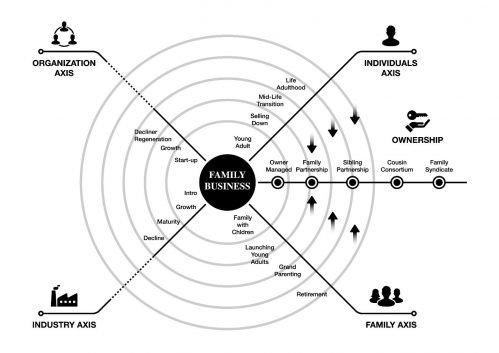Interfacing Lifecycle Imply Constant Change
Family Enterprise Advisors (FEAs) are taught the important principle that “interfacing lifecycles imply constant change”. That’s because there are a lot of interfacing aspects affecting the continuity of every family enterprise.
Simply stated, by being equipped to anticipate and welcome constant change as a part of the family enterprise lifecycle, families will be better able to build the governance systems needed to prosper through all of the stages that lie ahead.
Not every business owner will want to invest the time or money to work through all of these complexities over the changing interfacing lifecycles. And that’s perfectly all right, because it’s not for everyone. And for those who don’t want to, the family business can be liquidated along the path, or converted to a Family Investment Office or Family Office.
Everything has a lifecycle. Think about it, 50 years ago, they said technology doubled every 30 years. We know it’s much faster today…so let’s face it, things change, and really quickly! Not only do products change, but so, too, do individuals and entire industries change.
In the FEA course, we are taught there are in fact 5 distinct interfacing axes that will affect a family business over time, being 1) Family, 2) Organization (i.e. the business), 3) Individual, 4) Industry, and 5) Ownership. Manfred F.R. Kets De Vries, developed a very interesting chart to reflect the lifecycle over the many changing interfaces of a family business.

Along the Family axis, members start off young, and then age, go through parenting, grand parenting and retirement. Along this path, too, change can arise as new members are born, marry or divorce, and ultimately pass away.
The Organization axis has a natural lifecycle, consisting of start-up, growth, and either decline or regeneration. Ichak Adizes, one of the leading experts on corporate lifecycles, identifies 10 stages: courtship, infancy, go-go, adolescence, prime, the fall, aristocracy, recrimination, bureaucracy, and death. His teachings are a good reference for any family wishing to plan ahead.
The Individual axis moves along the maturity continuum, from youngster to adolescent, to mid-life and finally the mature adult, and is also affected by health and mortality.
The Industry lifecycle axis has stages progressing from 1) start-up, to 2) growth, to 3) maturity, and then to either 4) decline (and death) or 5) expansion and further growth. Think of Blockbuster, Tower records, and Kodak to name a few of the industry player who faced an industry decline.
The Ownership lifecycle axis moves from the simpler stage of single owner or family partners, to sibling partners, to cousin consortium and ultimately to a family syndicate with wider ownership and more challenging ownership decisions.
One must congratulate those family enterprises that have successfully navigated all of the lifecycle changes on the 5 axes over the lifecycle continuity spectrum.
With good advice from experts in family enterprise planning like FEAs, and a multi-disciplinary team of skilled experts to lend a hand, good governance systems can be built to deal with the changes that are inevitable. FEAs are able to help enterprise families anticipate the lifecycle changes, and understand the governance tools needed in all 3 Circles, to make the needed decisions by the family, for the family.
It’s not easy to have a family enterprise survive over many generations, but then again, if it were easy, everyone would be a Henry Ford. So, congratulations to Henry and his family successors, who enabled the everyman to own a car, and helped propel the world of robotic automation.
Congratulations! Continue as a Family Enterprise
Explore more resources as you continue on your learning journey!